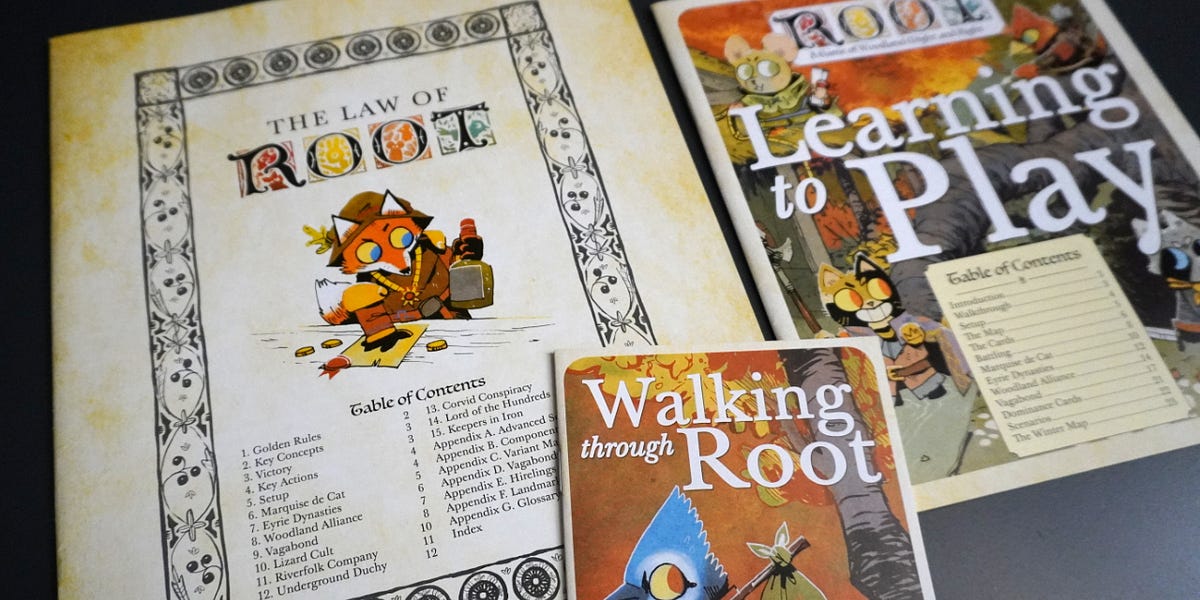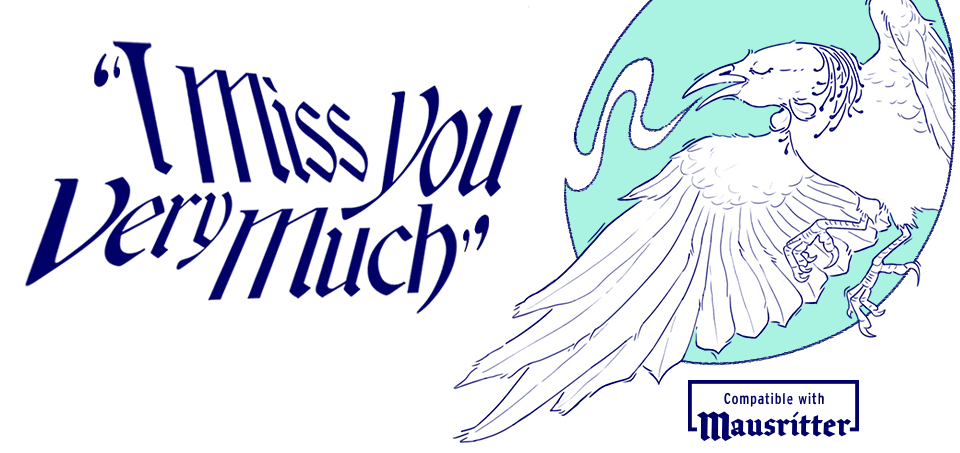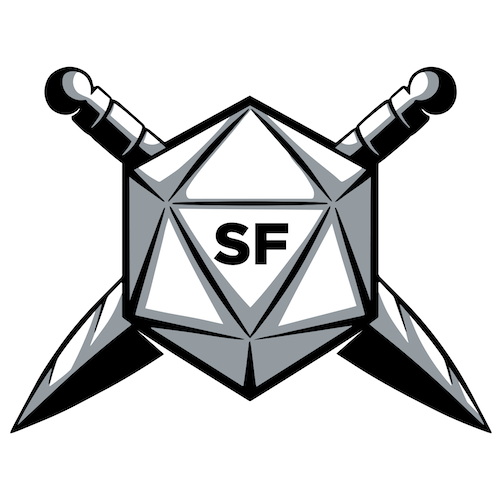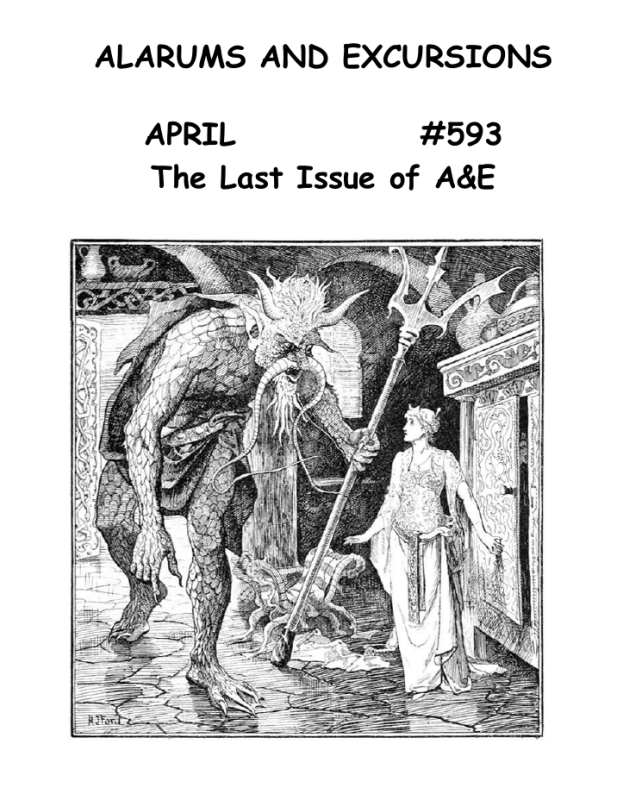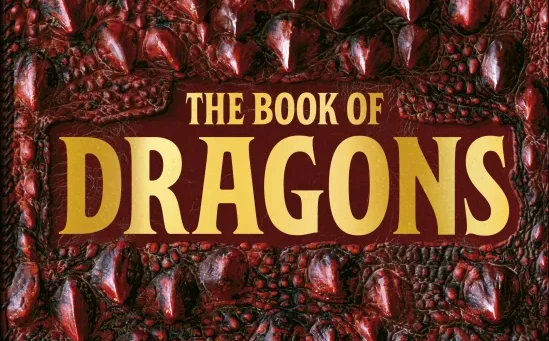SMOOSH JUICE
I Read Yazeba’s Bed & Breakfast

I Read Games reviews are me reading games when I have nothing better to do, like read a module or write or play a game. I don’t seriously believe that I can judge a game without playing it, usually a lot, so I don’t take these very seriously. But I can talk about its choices and whether or not it gets me excited about bringing it to the table.
The kids are home and screaming at each other while they play Mario Kart, so I’m reading Yazeba’s Bed & Breakfast, a game I’ve been postponing a review for for a while. Why? It’s an almost 500 page game created by Jay Dragon and M Vaseleak, with a huge cast of contributing authors and artists; Jay is a longstanding friend of mine, as are a few of the other contributors. I backed this on Kickstarter, many moons ago, but only received the gorgeous shelf-breaker of a tome recently.
Yazeba’s Bed & Breakfast represents a conundrum to me as a reviewer: I backed this to play, with the anticipated structure of the game being perfect for my life when the children were young and we were close to friends, but the delays in fulfilment mean my lifestyle has changed a lot in the intervening years. I really have trouble reading such a huge book and providing cogent and valuable criticism of it without playing, just because it’s hard to process it all; it’s a text of amazing scope, with 7 starting characters, about 50 unlockable characters, about 50 chapters (each with unique mechanics), plus 50 pages of appendices that you’re not supposed to look at, hidden mechanics, a packet full of stickers and a Forbidden Envelope. I attempted this by reading a few chapters a day for about a week, and scribbling my thoughts down as I went, then assembling them as best I could at the end.
Here’s what’s basically going on in this game: Yazeba’s Bed & Breakfast is a collection of mini-games (“chapters”) that you proceed through as you choose. Each mini-game has a different cast which you share, and so you might play Sal in one game and Amelie in the next. Characters have strengths and weaknesses (whoopsies and bingoes), and after each chapter a few things happen, which cause a sense of time passing and characters growing, adding to their shelves or journeys. Each chapter is intended to be short — less than 90 minutes — so you might play a few chapters in a single sitting. Each chapter has unique rules, although feature similarities, and might need extra stuff which is usually commonly available like scraps of paper, index cards or playing cards. Each chapter also has a mood, which helps you pick what you’re wanting to play.
Yazeba’s frames itself (although not formally) as the licensed RPG of a children’s cartoon. It does this, however, as a way of framing more adult stories and themes, which cover a gamut of themes that can be challenging if you choose to engage with them — although I think you could choose not to, thanks to the frame and the element of choice around both your actions and the chapters you choose to play through. Certainly, this is, while being a joy-filled and fun-loving text in a lot of ways, a game that engages actively with challenging themes around queerness and self-isolation in a way that can be really confronting and it uses the framing to temper those themes to be more palatable and easily engaged with. This is something many children’s stories do, which may be why it succeeds. The rules text is filled with prose interjections from within the world, often from the perspective of the main cast, and the chapters themselves often involve a lot of read-aloud text to set the scene. In general, these are just lovely to read, but for me the initially made the book easy to read, but the deeper I got into its’ 500 pages I had more difficulty reading them and processing them as they jumped from new mechanic to storybook prose and back again. The writing is gorgeous, though, and given the sheer number of writers involved, I think that it’s a hell of an achievement for it to come across as so cohesive.
The chapters aren’t difficult to play (compared to any other individual game), and some of them are clever and most of them are a lot of fun, but you do have to figure them out together whenever you choose not to repeat a chapter. A few highlights from the starter chapters (not the locked ones that come later): Ollie Ollie Oxenfree, where you draw a collaborative map of the Bed & Breakfast and then hide in it, and Gone Fishin’, where you create a custom deck of fish to fish from. I really like some of the locked chapters, and one hidden chapter which involves a treasure hunt feels an absolute joy. There are all kinds of surprises to find. I prefer the chapters where everyone is adventuring, or some variation of that, than the chapters that are explicitly about character development for one of the characters — that said, however, the nice thing about those chapters is that you may pick ice skating without realising that when you pick Parish you’ll be making permanent decisions about who he is, and that shared development is a lot of fun to me. As the game goes on and becomes deeper, the complexity of the chapters match this: While I can see the intent here, chapters like Yazeba Casts a Spell, which benefit from by this point many sessions of build up, become a little unwieldy, and I would have trouble facilitating them as a Concierge without either experience running them before, or a fair bit of prep time — they’re a little anxiety provoking for me in terms of scale. Some of them are very compelling, too, though: One late-game chapter where you explore a ruin is something that many people would release as its’ own game, here just a chapter and the cumulation of a single character’s story. Overall, I think the hardest thing to recommend about Yazeba’s Bed & Breakfast is the breadth of play possibility here: Many tables might stumble into chapters they don’t know how to play, or don’t feel comfortable in that kind of play, or that involve a physicality or a mood of play that they can’t engage in well, and I think that’s quite unavoidable, even though the game tries to answer this through labelling and indexes and smart incorporated safety tools. Even with these things, the only way to curate for the things that you feel comfortable with is to not play a significant part of the game, and that, for someone like me, I’m not “finishing” the game — and this is a game that can be finished. For example, while Yazeba’s zenith is a fun, if mundane hour of play, it flagged with the pensive tag, Gertrude’s “Home” is intended as a fairly challenging exploration of her past, and it features among others the heavy tag. Aside from “heavy” you have to read it to see if it is too much for you, and if it is — you don’t get to finish Gertrude’s story. In the creation of something of this scale, you have to make some curation decisions, and I don’t think the better decision would have been to leave out the “heavy” chapters because clearly the creators wanted the game to have a breadth from vulnerability to party, but for those who don’t play their roleplaying games for that emotional catharsis or engagement, you’re missing out on a lot of Yazeba’s Bed & Breakfast. For those who want the opportunity to take tours through these characters and explore things in ways they have never explored before, however, chapters like this are the juice of the game, and will make a really effective zenith for those characters. This breadth goes in other directions, as well, though: Yazeba’s Bed & Breakfast feels like a game to be played at a coffee table, not at a kitchen table. Some of these games evolve you standing in front of your friends and performing. Some involve literally moving around the space you’re physically in as the players. You can — this is definitely an option, just like using a character voice or not is always an option — just describe what’s going on, but for many of these chapters, Yazeba’s Bed & Breakfast wants to transcend what we view TTRPGs to be, incorporating physical and ritualistic play, incorporating embodiment of your characters and fourth-wall breaking, in a way that most TTRPGs don’t ask you to. Yazeba’s in a way, feels designed to put everyone out of their comfort zone, somewhere in the book.
The core and developing cast are a huge part of Yazeba’s Bed & Breakfast, and I think that it’s really compelling being provided the potential to develop those characters together as a group, and things like the Forbidden Envelope also mean that some of those developments are hidden from view until you play the right chapters in certain ways, or achieve certain milestones. There is a breadth of characters in the book that is large enough that it would be a lie to say that you can’t play as a wide range of experiences, however, it’s also pretty clear that the game is not about all of those characters and their growth, but rather it’s about some specific characters and their coming of age. There’ll be some push back against my use of that word, but I genuinely think that a theme here is even the “older” characters like Parish and Yazeba are frozen in a specific moment, and their stories are about understanding themselves and overcoming those specific moments, to become who they want or are meant to be. I don’t think this is said explicitly in the text — although there’s a lot of text and I might be misremembering — but there it feels implicit in the prologue text — “the world was cruel and there was a witch who knew it well, and so she sold her heart to build a house in teh woods where the world could never find her” — that all of these guests are taking refuge here, are hiding from the world. It is explicit, however, that (spoilers, I suppose, for unlockable rules) when a character grows up, they leave the Bed & Breakfast, and their chapters are locked. Being in this liminal witch-cast Bed & Breakfast, for most of the guests, is a stepping stone to their becoming who they want to be, and most of the chapters, and particularly the locked chapters, involve specific cast members taking steps along that journey, and so it is a game that is unavoidably heartfelt and emotionally resonant for almost anyone who has felt they wanted to hide from the world, but eventually realised that stasis may not be the way forward. These stories of growth and variations on youth and struggling with where you fit in the world and how you make a place for yourself are the stories you’re playing this game for.
Yazeba’s Bed & Breakfast comes with stickers, expects you to mark the book up, and expects you to open the envelope that comes with it. It uses terminology like “scraps of paper” and “doodle” and “paperclip”, because it wants the book to be used and marked and torn and changed. The character sheets are in the book, right in the middle, as are the journeys and book shelves. The intent is for the book to be modified in play: an expensive, beautiful, 500 page work of art of a rulebook is rendered mutable and fluid by play. I’m not sure if it’s the intent, but it feels like as written you may not have the character sheet of your character in front of you the whole game, so much like children’s memory, what you are playing and who you are, and the decisions you make, are as fluid as a child’s memory, and may merge together, like Spidey and the Octonauts becoming part of a single universe in the playground. As well as this interest in memory and what it means to inhabit a place and share characters that are vulnerable to the inconsistency of memory, Yazeba’s is deeply interested in the book itself as a physical artifact of play, in a really interesting way, though. There are chapters that involve searching through the book, chapters are out of order and it expects you to engage with the book itself as players. The book is not just for the Concierge, even if it’s anticipated that the Concierge purchase the book. I think this is really interesting, particularly when taken as a part of Possum Creek’s output as a whole — a few years earlier we have Wanderhome, where a huge amount of the content is in a gazeteer in the forms of tables, and in calendars changing seasons. There are lots of surprises in Wanderhome if you play it deeply and long enough, and you can see Yazeba’s interest in its’ physical, changing tome as an extension of that. But furthermore, if you look at the in-process Seven Part Pact, you can see it extended even further, where the rulebook stands in as a spellbook, one that you need to follow the rules of, and spend time understanding, and one that rewards increasingly more physicality as part of its play: the book (and the physical things the book asks you to bring to it) are the game more literally than in most TTRPGs. This feels to me like a really interesting response to the question of “How can TTRPGS be more like board games?”. Board games in the age of crowdfunding advertise themselves and thrive on premium tokens, on deluxe physicality, even as the basic versions still resemble boardgames of yore. That physicality is really meaningful to your experience of a board game — be it the destructive physicality of Risk Legacy, or the extreme use of miniatures and terrain in wargames, or bespoke carved wooden tokens and dials, and games like this feel like they are a recognition of the fact that while the book is a core part of my understanding of TTRPGs, we can still ask how we can bring that deluxe physicality to TTRPGS if we can make the book respond to our play the same way a board game might, without simply adding extra tchotchkes. It’s interesting stuff, and a compelling direction for TTRPGs to pursue.
While this is a compelling and fascinating direction, there is a tension between form and function in TTRPGs as they struggle with increasing production values, but also want to be lived-in artefacts of play. A Thousand Year Old Vampire — a game which I remember creator Jay Dragon playing in serial when it was released, and so I suspect is an influence here if a tangential one — is a beautiful book, that wants to be written in, wants to be scrawled in, and whose form does not match that desire at all. Many people have argued that destroying something of beauty is the point of what Tim Hutchings is going for in A Thousand Year Old Vampire, but I don’t think that’s my objection: It’s the fact that A Thousand Year Old Vampire as a book is not a good vehicle for the game the book is asking me to play in it. Part of this is the paper quality, the binding, the heavily-produced but beautiful pages, but not because they’re beautiful, but rather that ink smudges, that there are no boxes to tick or places to write things, and that it leaves it up to you how to record things and how to understand the game: It’s easy to find people talking about how to play it if you google it, which make me feel I’m not alone in this experience. Yazeba’s, also treads this line, as a gorgeous tome of a book. The child-like nature of the layout, art, and presentation, makes me feel more comfortable to modify, but the size of the book causes a mismatch in function for me: This is a tome, one of the biggest books I have on my shelf. And so, while I love doodling and adding stickers, and while I think the character sheets (shared, of course) are intentionally in the book and not easily found to be printed off, I think the issue with Yazeba’s format is that the book’s size isn’t compatible with easily passing around the table during play, or perhaps isn’t bloating absurdly with paper that has been endlessly stickered upon with new rules. I want Yazeba’s to be a smaller book, but one that is bulging at the seems. I suspect Yazeba’s — although less of an imposing book it may have been — would have worked better as a series of books. Now, I didn’t back for the boxed set (it costs almost $300 right now in my country), and I wonder if the play aids in the boxed set — a “ledger” for example — might have occupied that space for me had I been in a more liquid position back when I’d backed this. About 100 pages of this book by my count is stuff that could be moved into a secondary book specifically for marking up, that would be easier to pass around the table. But that might also steal some of the magic away. And, the presence of the tome is also important to the role I see this game playing in the theoretical home it is played in: This is a game that lives on the coffee table, waiting for people to become curious about, to discover new things about, to be surprised by. Without the thickness and beauty of the tome, and its stickers and changes, it perhaps loses that presence.
I have gotten this deep into a review without mentioning the art, nor the layout: They’re both spectacular. Vibrant, childlike, generous, and bold. A friend of mine is absolutely obsessed with Triangle Agency, and particularly loves its’ locked sections and its’ wall-breaking approach to layout. In my opinion, Ruby Lavin’s layout for Yazeba’s attempts to do what Triangle Agency does in terms of breaking the fourth wall and becoming a play artefact, but in a more accessible, charming, and interesting way. I know that to a degree the inaccessibility of Triangle Agency is the point: I don’t care, though, I bounce off the lack of accessibility in the text. I prefer everything Yazeba’s does to the same ends, in the way it does it. It’s wonderful to have to hold up a chapter you’ve discovered in the mirror to read it; it’s drudgery to to wade through the overwhelming mess that are the latter parts of Triangle Agency’s Manager’s section. It brings a smile to your face to discover that you’re playing D&D all of a sudden for a night instead of Yazebas’s; that trick is repeated many times in Yazena’s, and only once in Triangle Agency. Many of the layout conceits here are secretly covers for later trickery in terms of gameplay. Where Triangle Agency leans so hard into its’ conceit it’s unplayable, Yazeba plays its’ conceit with you, successfully. It’s legible where it needs to be, but where the navigation is a challenge it’s for a purpose — again something Triangle Agency attempts but does not succeed comparatively at. I don’t know that it’s perfect, but it is playful, clever, and creative, and feels almost universally like the children’s TV show that it imagines itself to be, despite the barriers.
So, is Yazeba’s Bed & Breakfast for you? I don’t know. It’s beautiful, both as an artifact and a work of writing. It is filled with joy and love and warmth. I imagine Yazeba’s being a formative part of growing up, for some young adults: I’m living in a sharehouse, and a big ol’ coffee-stained copy of Yazeba’s sits on the table, along with a mason jar filled with tokens and stickers and a pair of scissors, and every night we play through one or two chapters. We run around the house playing games with Hey Kid and Sal. People flick through and either surreptitiously read locked chapters and realise — how can I play this? Or find hidden chapters that aren’t in the index. When I was younger, I did this! But in my current life, does Yazeba’s Bed & Breakfast fit into my life as well as I hoped it would? No. Maybe I could adapt it: An online free-for all, where the number of players showing up dictates the chapter played. Or, if I lived next door to my bestie, she could come over and play on odd nights where the kids were busy watching a movie. More realistically, I might play this with my children, when they’re old enough to understand the game, in five years time. This game and its messages would mean the world to a kid the age of its protagonists. The main barrier is the scope of the work: The index helps, but it doesn’t actually list all the moods, for big groups or for small ones, for example. Yazeba’s rewards it being the main game you play, for a time, where everyone gets familiar with the rules, and it’s easier. As is, even though the individual games are straightforward, there’s a learning curve there that can be tricky. There are barriers to this being the game I wanted it to be, in the life I’m living at the moment.
Yazeba’s Bed & Breakfast, to be honest, is far more compelling, meaningful and interesting that I expected, but for me, that success limits how I can fit it into my life — for now, at least. It would have been easier had I not read the damned book — the first few chapters fit my preconceptions far better without the knowledge of what is to come. Yazeba’s Bed & Breakfast is, however, unequivocally a masterpiece, in terms of being one of few games that captures not just a type of story or mood within its pages, but the sense of being a certain age with all of its ups and downs. The ideal audience for it is one has the energy for its’ most energetic chapters, sometimes. That feels excited to step out of their comfort zone and play tag or perform a song in front of their peers as if they were a cartoon frog. That want to learn new mechanics always, but are quick to forget and care about youth and memory. That want to engage in vulnerable and emotional story arcs, but not all the time. If your table is the kind to be excited and engaged new opportunities to roleplay in different modes, and to expand and contract their level of vulnerability readily, then Yazeba’s Bed & Breakfast is absolutely going to work for you. I have one proviso, though, and it will be of no surprise if you actually read the review: This game is so interested in physicality that you really, really should get a physical copy: The problem is, it’s no longer in print. But, there are a few places you can still buy the book and the boxed set if you do some diligent searching. If you read this and thought: “Oh yeah, I want to play that”, I’d probably track down one of those last few remaining copies, rather than buy the digital version.
Idle Cartulary
Playful Void is a production of Idle Cartulary. If you liked this article, please consider liking, sharing, and subscribing to the Idle Digest Newsletter. If you want to support Idle Cartulary continuing to provide Bathtub Reviews, I Read Reviews, and Dungeon Regular, please consider a one-off donation or becoming a regular supporter of Idle Cartulary on Ko-fi.


